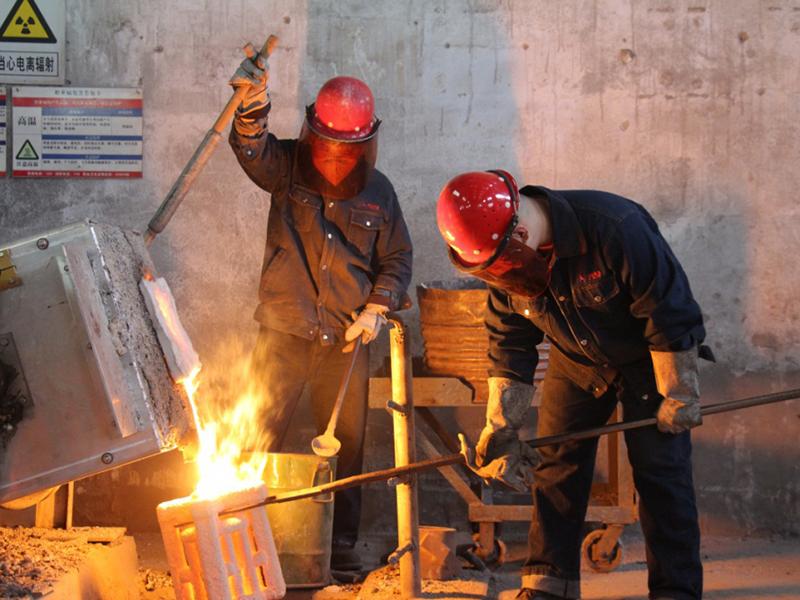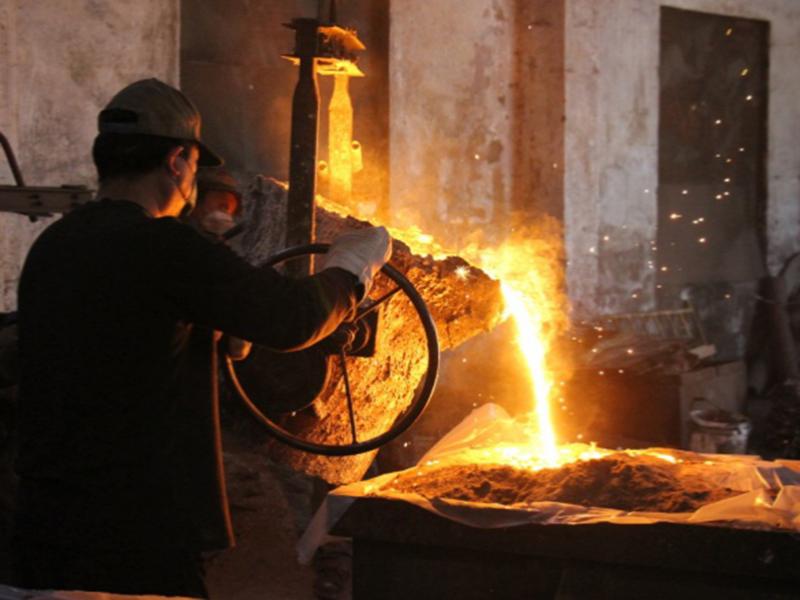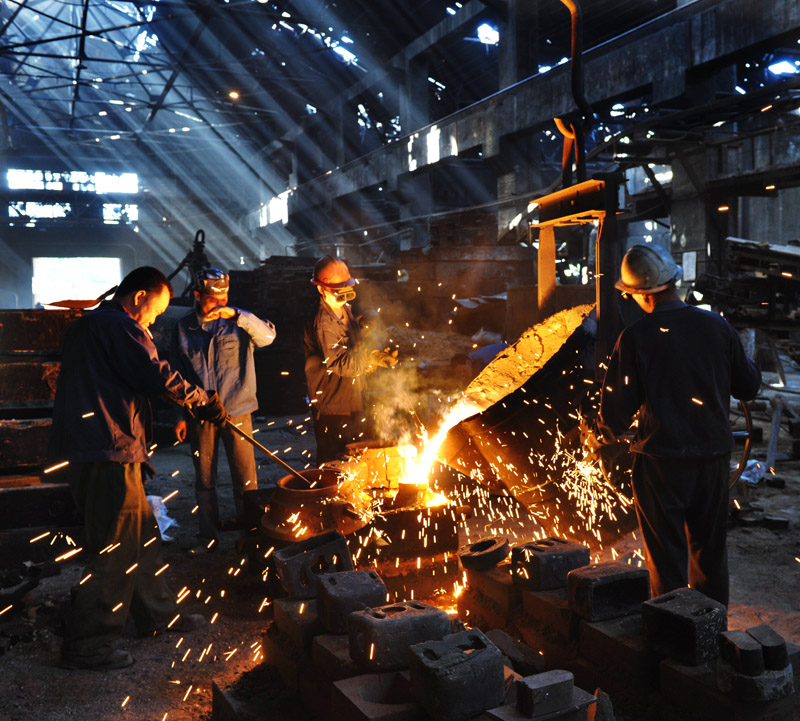
Investment casting is renowned for its precision and smooth finishes, making it ideal for intricate designs. This process produces precision castings components and investment casting parts with tight tolerances, often eliminating the need for additional finishing. In comparison, sand casting provides simplicity and cost-effectiveness for larger parts, while die casting is well-suited for high-volume production but demands complex tooling at the outset. Investment casting components are particularly valued for their ability to meet detailed specifications, ensuring high-quality precision casting parts for various applications.
Overview of Casting Methods

Investment Casting: Precision and Versatility
Investment casting stands out for its ability to create intricate designs with exceptional accuracy. This process uses a disposable wax pattern coated in a ceramic shell, which is then heated to remove the wax and filled with molten metal. The result? Components with tight tolerances and smooth finishes that often require little to no post-processing. It’s a go-to method for producing precision castings components in industries like aerospace and medical, where complex geometries and high-quality finishes are essential.
One of the biggest advantages of investment casting is its versatility. It supports a wide range of materials, including carbon steel, stainless steel, titanium alloys, and more. This flexibility makes it suitable for various applications, from small, detailed parts to larger, intricate designs. Plus, its near-net shape capability minimizes material waste, making it an efficient choice for high-precision projects.
Sand Casting: Simplicity and Cost-Effectiveness
Sand casting is a straightforward and economical method, especially for large, simple parts. It involves creating a mold from sand, which is then filled with molten metal. This process is ideal for low-volume production or custom parts, as it uses inexpensive materials like sand and clay. It’s commonly used for automotive and construction components, such as engine blocks and structural elements.
However, sand casting has its limitations. The molds can lead to rough surface finishes and lower dimensional accuracy. Additional machining is often required to meet precise specifications. Despite these drawbacks, its ability to accommodate a wide range of part sizes and materials, like aluminum and cast iron, makes it a practical choice for many industries.
Die Casting: Speed and High-Volume Efficiency
Die casting excels in high-volume production, thanks to its use of permanent metal molds. This method allows for rapid production rates, with some setups producing thousands of parts daily. It’s particularly efficient for industries like automotive and consumer electronics, where consistency and speed are critical.
The process offers several benefits, including excellent surface finishes, minimal post-processing, and the ability to create complex geometries. Die casting primarily works with non-ferrous metals like aluminum and zinc, which have low melting points. While the initial tooling costs can be high, the per-part cost decreases significantly as production volume increases, making it a cost-effective option for large-scale projects.
Comparison of Key Factors
Precision and Surface Finish
Investment casting leads the pack when it comes to precision and surface finish. This method uses fine slurry material, which results in smooth surfaces and exceptional dimensional accuracy. It’s perfect for creating intricate designs and thin walls. Sand casting, on the other hand, produces rougher finishes due to the sand molds. While it works well for larger parts, it often requires additional machining to meet precise specifications. Die casting offers better surface finishes than sand casting but doesn’t quite match the finesse of investment casting.
- Key Highlights:
- Investment casting delivers excellent surface finishes and precise details.
- Sand casting is less accurate and produces rougher surfaces.
- Die casting provides good finishes but is less suited for highly complex designs.
Cost and Tooling Requirements
Tooling costs vary significantly across these methods. Sand casting is the most budget-friendly, with tooling costs ranging from $6,000 to $20,000. Investment casting falls in the middle, while die casting has the highest upfront costs, often exceeding $60,000. However, die casting becomes cost-effective for large-scale production due to its low per-part cost.
| Casting Method | Upfront Tooling Cost | Post-Cast Machining Costs |
|---|---|---|
| Investment Casting | Medium to High | Low |
| Sand Casting | Medium | Low to Medium |
| Die Casting | High | Medium to High |
Production Capabilities and Scalability
Investment casting shines in scalability. It can produce multiple precision castings components in a single batch, making it ideal for high-volume needs. Sand casting handles moderate production volumes but struggles with consistency. Die casting, with its rapid production rates, is unmatched for large-scale projects.
| Casting Method | Production Volume | Scalability |
|---|---|---|
| Investment Casting | High | High |
| Sand Casting | Moderate | Moderate |
| Die Casting | High | High |
Suitability for Complex Designs
When it comes to complex designs, investment casting is the clear winner. It can create intricate shapes, thin walls, and smooth surfaces with ease. Sand casting, while versatile, struggles with fine details and requires additional steps for internal cavities. Die casting offers better dimensional accuracy than sand casting but lacks the flexibility of investment casting for highly detailed parts.
Tip: For projects requiring intricate geometries and high precision, investment casting is the best choice.
Advantages and Disadvantages
Investment Casting: Pros and Cons
Investment casting offers several benefits, especially for projects requiring precision and intricate designs. Its ability to produce complex geometries with high accuracy makes it a favorite in industries like aerospace and medical. The process also minimizes material waste, as less machining is needed. Additionally, tooling costs are lower compared to die casting, making it a cost-effective option for medium production volumes.
However, investment casting has its drawbacks. The process involves expensive materials and specialized equipment, which increases the overall cost. Lead times can also be longer due to the complexity of creating wax patterns and ceramic molds. While it excels in precision, it may not be the best choice for projects with tight budgets or short timelines.
Pros:
- High precision and accuracy.
- Reduced material waste.
- Competitive manufacturing costs.
Cons:
- Higher initial costs.
- Longer lead times.
Sand Casting: Pros and Cons
Sand casting is known for its simplicity and versatility. It can cast almost any metal and handle parts of any size, shape, or weight. This makes it a practical choice for large, simple components. The process is also cost-effective, especially for low-volume production.
On the downside, sand casting produces rough surface finishes and wide tolerances. Additional machining is often required to achieve the desired specifications. While it’s versatile, it struggles with intricate designs and fine details.
Pros:
- Cost-effective for large parts.
- No size or weight limitations.
- Works with a wide range of metals.
Cons:
- Rough surface finish.
- Requires post-cast machining.
Die Casting: Pros and Cons
Die casting stands out for its speed and efficiency in high-volume production. It delivers excellent dimensional accuracy and smooth surface finishes. The process also ensures low porosity, which enhances the strength of the final product. These advantages make it ideal for industries like automotive and electronics.
However, die casting comes with high tooling costs and is limited to non-ferrous metals. It’s also less suitable for large parts due to size restrictions. While it excels in speed, the initial investment can be a barrier for smaller projects.
Pros:
- High production rates.
- Excellent surface finish and accuracy.
- Low porosity for stronger parts.
Cons:
- High upfront tooling costs.
- Limited to non-ferrous metals.
| Casting Type | Advantages | Disadvantages |
|---|---|---|
| Investment Casting | Intricate shapes; excellent accuracy and finish | Expensive; longer lead times |
| Sand Casting | Versatile; cost-effective; no size limitations | Rough finish; wide tolerances; machining needed |
| Die Casting | High accuracy; fast production; low porosity | High tooling costs; limited metals and sizes |
Tip: Consider the specific needs of your project, such as budget, precision, and production volume, when choosing a casting method.
Ideal Applications

Precision Castings Components for Aerospace and Medical Industries
Investment casting plays a critical role in aerospace and medical industries, where precision and reliability are non-negotiable. This method excels at producing intricate components with tight tolerances and smooth finishes. Its ability to create near-net shape products reduces material waste and lowers manufacturing costs. Industries value this process for its capability to handle complex geometries and thin-wall designs.
In aerospace, investment casting is used to manufacture gears, engine parts, brackets, and housings. These components demand high accuracy and durability to withstand extreme conditions. Similarly, the medical field relies on this method for orthopedic implants, surgical instruments, and dental tools. Items like knee implants, tibial trays, and patella sizers benefit from the precision and surface quality that investment casting offers.
Note: Investment casting ensures high-quality results, making it ideal for critical applications in these industries.
Sand Casting for Large, Simple Parts in Automotive and Construction
Sand casting is a go-to method for creating large, straightforward components in automotive and construction sectors. Its adaptability and cost-effectiveness make it a practical choice for heavy equipment and structural parts. Sand molds can accommodate a wide range of metals and sizes, making this process versatile.
In the automotive industry, sand casting is commonly used for engine blocks and transmission housings. Construction applications include pipe fittings and manhole covers. The process’s efficiency and material versatility allow for quick scaling of production while keeping costs low. Although the surface finish may require additional machining, sand casting remains a reliable option for durable, large-scale parts.
| Industry | Typical Applications |
|---|---|
| Automotive | Engine blocks, transmission housing |
| Construction | Pipe fittings, manhole covers |
Die Casting for High-Volume Consumer Goods and Electronics
Die casting shines in the production of consumer goods and electronics, where speed and consistency are essential. This method delivers high precision and uniformity, making it perfect for high-volume manufacturing. With rapid cycle times, die casting can produce thousands of parts daily, reducing costs as production scales up.
Common applications include laptop and phone casings, smartwatch frames, and router enclosures. Heat sinks for CPUs and GPUs, USB ports, and battery terminals are also frequently made using die casting. The process’s ability to create complex geometries with minimal post-processing ensures efficiency and quality, meeting the demands of modern electronics and consumer goods industries.
Tip: Die casting is ideal for projects requiring high-speed production and consistent quality.
Choosing the right casting method depends on understanding each process’s strengths and weaknesses. Investment casting stands out for its precision and ability to handle complex designs. Its key strengths include:
- Exceptionally accurate dimensional results.
- Compatibility with ferrous and non-ferrous metals.
- Superior surface finish and intricate details.
- Capability to produce thin walls and complex geometries.
Sand casting offers simplicity and cost-effectiveness for large, straightforward parts, while die casting excels in speed and high-volume production. Aligning the method with project needs is crucial. Here’s a quick comparison of critical factors:
| Factor | Description |
|---|---|
| Cost | Die casting is economical for large volumes; investment casting is costlier for small runs. |
| Product Quantity | Die casting suits high production rates; investment casting is ideal for lower volumes. |
| Surface Finish | Investment casting provides superior finish; die casting may need additional machining. |
| Time and Speed | Die casting is faster; investment casting prioritizes quality over speed. |
| Shape and Size | Die casting allows flexibility; investment casting excels in small, intricate shapes. |
| Strength | Both methods offer strength, but specific needs may favor one over the other. |
| Application-Specific Needs | Understanding the part’s application is crucial for choosing the right method. |
To select the best method, consider these steps:
| Factor | Die Casting | Investment Casting |
|---|---|---|
| Cost | Best for large volumes | Higher costs for small runs |
| Product Quantity | Suitable for high production rates | Ideal for lower volumes |
| Surface Finish | Good finish, may need machining | Exceptional finish with intricate details |
| Time and Speed | Faster production | Slower, more deliberate process |
| Shape and Size | Flexible for large parts | Excels with small, complex shapes |
| Strength | Reliable for non-ferrous metals | Can meet specific strength needs |
| Application-Specific Needs | Best for cost-effective, large quantities | Perfect for complex designs with fine details |
Tip: Always match the casting method to your project’s precision, budget, and production volume needs. This ensures efficiency and optimal results.
FAQ
What makes investment casting better for intricate designs?
Investment casting creates precise shapes with smooth finishes. It’s perfect for intricate designs, like precision castings components, due to its ability to handle complex geometries effortlessly.
Is sand casting suitable for high-volume production?
Sand casting works best for low to moderate production volumes. It’s not ideal for high-volume needs because of its slower process and less consistent results.
Why is die casting preferred for consumer electronics?
Die casting produces parts quickly and consistently. It’s great for consumer electronics because it delivers smooth finishes and handles high production volumes efficiently.
